There’s a lot in the air these days. Unfortunately, a lot of what’s in the air is smoke, pollen, and other scary things.
The wildfires in Canada are in the headlines around the world, although somewhat surprisingly, a lot of the stories seem to take a folksy “ah, whoops, it’s like bad weather” perspective. “Will it hamper your fun on Canada Day?” asks this one, and this one wants to know if it’s gonna be a bummer to go camping without campfires, swimming, or s’mores. Sadly, the reality is that the smoke will have a real health impact on many people, as described by some of the same news services.
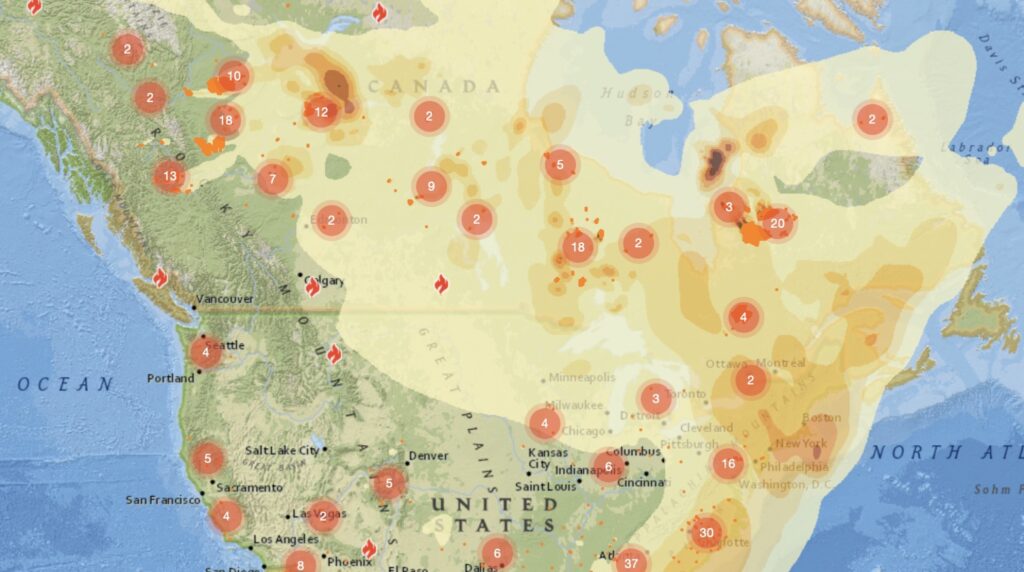
For those who are able to, it’s safer to stay indoors, preferably with an air filter. There are web sites where you can track your local conditions as just another component of the weather, or where you can see the big picture and forecasts.
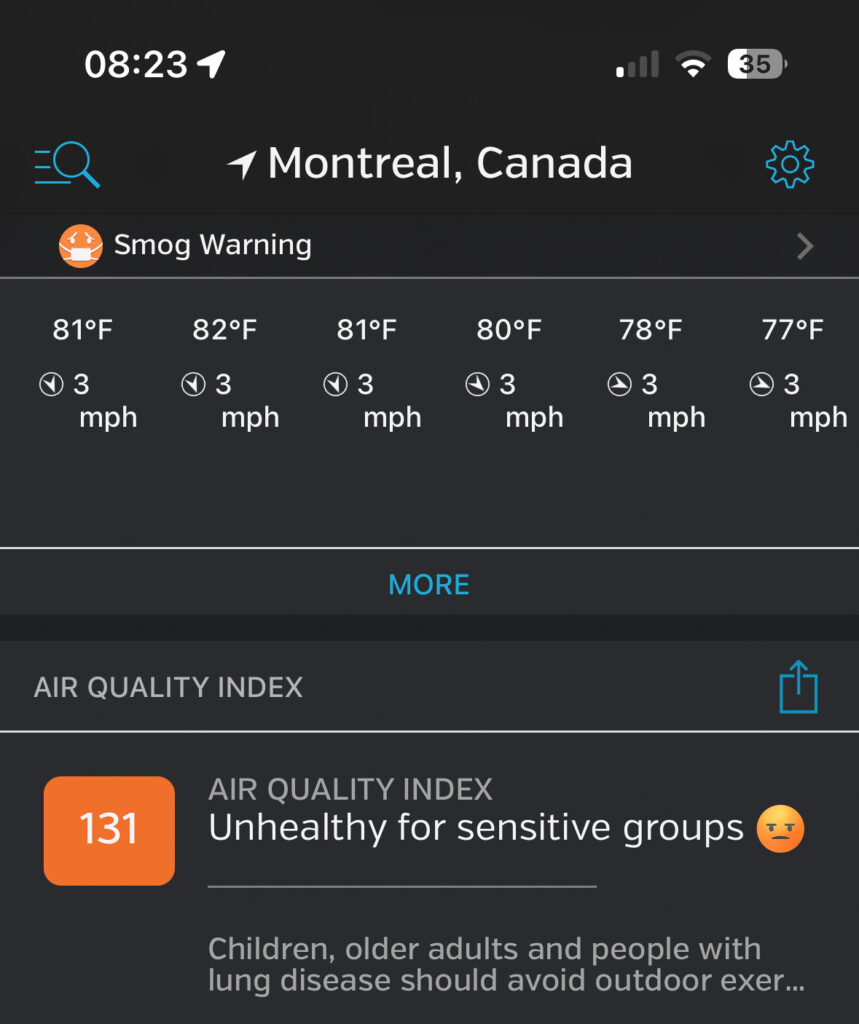
Governments and environmental agencies rate air quality using the Air Quality Index (AQI), which turns out to be defined and computed differently depending on where you are. In general, though, what’s being tracked are particulates and various harmful gasses like nitrous oxides, sulphur dioxide, ozone, and carbon monoxide. With smoke, the dominant problem is the particulates, which get broken down by size: PM2.5 are 2.5µm or smaller, while PM10 are 10µm or smaller. Somewhat counterintuitively, the smaller particles are more dangerous, since they can enter deeper into your lungs (and may cross the blood-brain barrier when they get in your bloodstream).
One bit of slightly good news is that the same masks that are good for preventing Covid infections are pretty good at keeping out the nasty particulates. In fact, that “95” in your KN95 mask means it filters out roughly 95% of non-oily PM2.5 particles!
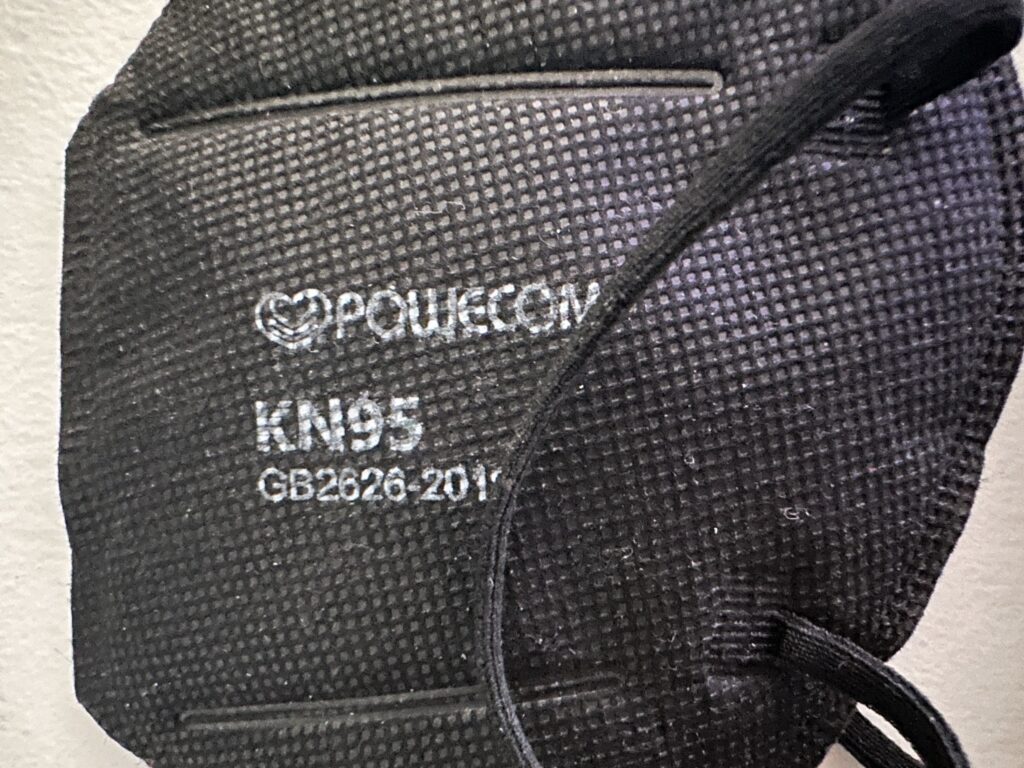
So, on a somewhat related note… back in the peak of the pandemic, a lot of safety-conscious folks were advocating better indoor ventilation to combat infection. One way to get an idea of the quality of ventilation is by measuring CO2 levels. People exhale CO2, so if ventilation is not good, you can measure elevated levels of the gas.
I recently acquired an inexpensive CO2 meter to help me assess public places. When it comes to these kinds of meters, you calibrate against outdoor air, and then you can measure indoors. The atmospheric standard for levels is measured at the Mauna Loa Observatory in Hawaii, where (as of May 2023), the average is 422PPM. When I checked my meter on the streets of Rosemont where I’d expect a higher amount, its lowest reading is 415PPM. That’s within a few percent and well within any accuracy I’d need.
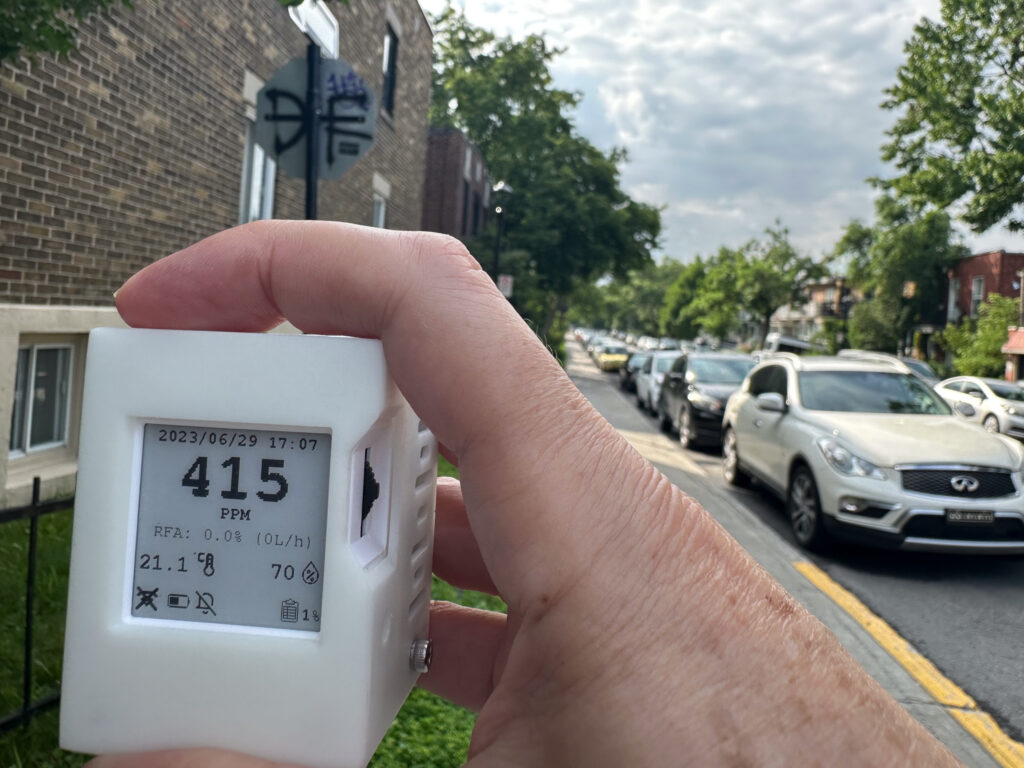
Measuring indoor CO2 in the apartment with the door open, we get as low as 550PPM. When I did some work in the local libraries, Bibliothèque de Rosemont’s internet area averaged 1,280PPM, while
at the desks upstairs at Bibliothèque de La Petite-Patrie, the average was a low 560PPM. Again, the exact numbers aren’t that important, it’s more that the general magnitude reflects the quality of the ventilation.
Of course, with the gathering of any data, the question might arise: is it actionable? The data tells me that Bibliothèque de La Petite-Patrie has good ventilation — the indoor air is close to being the same as it is outdoors. But would I be comfortable with regards to Covid risk sitting inside there without a mask? After all, before the smoke alerts, I walked around outside without a mask. The answer is not yet, but I’ll need to do more research.
So maybe trying to measure levels to understand the ventilation is a distraction. I still find it very interesting. When I get drowsy in the afternoon and lack focus, is it because of postprandial depression, or the fact that CO2 levels in the room are breaking 1,500PPM? When should I worry? The levels get as high as 2,500PPM in the apartment at night with the windows all closed. What buildings are well-ventilated? How about the grocery store? What are the levels down in the metro? If I leave a can of seltzer water near the monitor, is that enough to change the readings? (Yes, it turns out, and by over 800PPM!)
With the fires, I was thinking it would be useful to have an air-quality monitor that measured particulates. I could then figure out if our air filter was doing a good job. But there’s also the risk I run into with the CO2 meter, which is getting obsessed with measuring things where there’s no simple response. Still, it would be interesting…
(Images taken from screenshots from https://wunderground.com and https://firesmoke.ca)

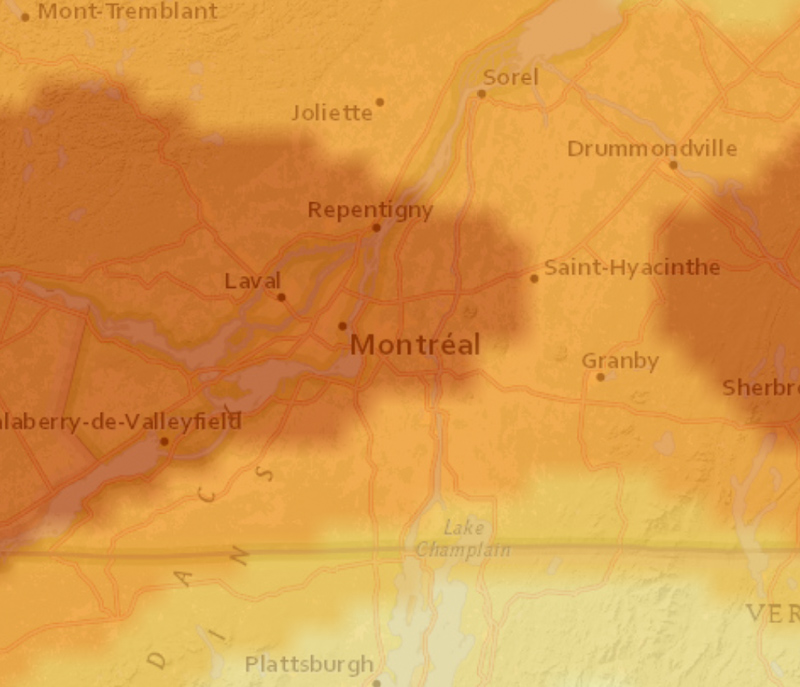
2 replies on “Something in the air…”
Hmmm. CO2 level in the air…something I don’t really think about. If everybody pays attention to it daily like the temperature or humidity, would it help everyone to be more environmentally conscious??
That’s a good question.